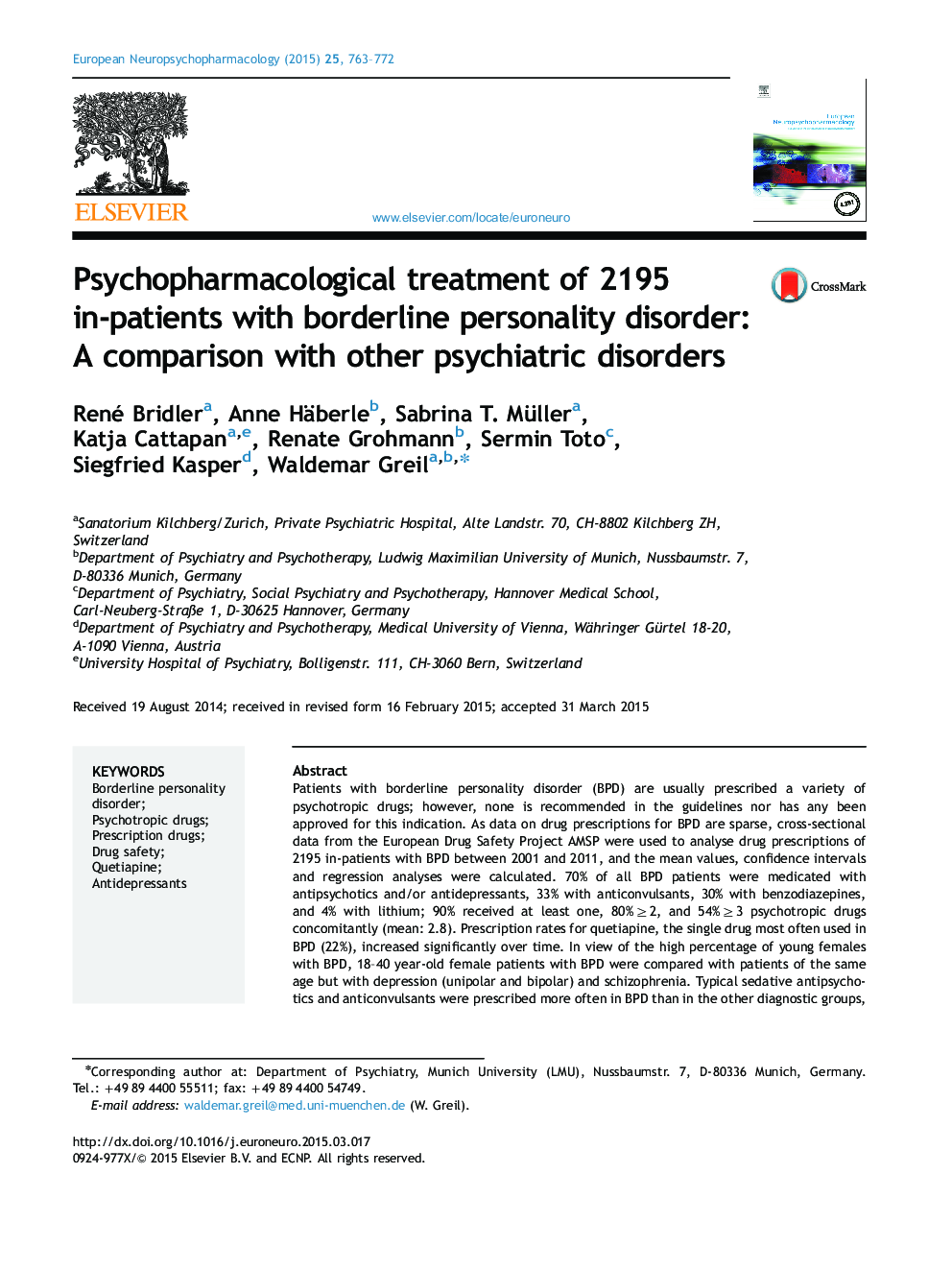| کد مقاله | کد نشریه | سال انتشار | مقاله انگلیسی | نسخه تمام متن |
|---|---|---|---|---|
| 320106 | 539663 | 2015 | 10 صفحه PDF | دانلود رایگان |
• Only 10% of 2195 in-patients with BPD did not receive any psychotropic drugs.
• Polypharmacy is common: 80% received ≥2, 54% ≥3 psychotropic drugs concomitantly.
• Antidepressants and antipsychotics were given most often: prescription rate 70% each.
• Typical sedative antipsychotics were frequently prescribed in BPD.
• Anticonvulsants were given more often compared to depression and schizophrenia.
Patients with borderline personality disorder (BPD) are usually prescribed a variety of psychotropic drugs; however, none is recommended in the guidelines nor has any been approved for this indication. As data on drug prescriptions for BPD are sparse, cross-sectional data from the European Drug Safety Project AMSP were used to analyse drug prescriptions of 2195 in-patients with BPD between 2001 and 2011, and the mean values, confidence intervals and regression analyses were calculated. 70% of all BPD patients were medicated with antipsychotics and/or antidepressants, 33% with anticonvulsants, 30% with benzodiazepines, and 4% with lithium; 90% received at least one, 80%≥2, and 54%≥3 psychotropic drugs concomitantly (mean: 2.8). Prescription rates for quetiapine, the single drug most often used in BPD (22%), increased significantly over time. In view of the high percentage of young females with BPD, 18–40 year-old female patients with BPD were compared with patients of the same age but with depression (unipolar and bipolar) and schizophrenia. Typical sedative antipsychotics and anticonvulsants were prescribed more often in BPD than in the other diagnostic groups, with the exception of bipolar depression; this was true for the single substances quetiapine, levomepromazine, chlorprothixene, carbamazepine, and valproate. A limitation of the study was the use of clinical data without verifying the diagnoses by structured interviews. Contrary to the guidelines, about 90% of in-patients with BPD received psychotropic drugs. Polypharmacy was common, and antipsychotics with sedative profiles such as quetiapine and mood-stabilizing anticonvulsants such as valproate appear to be preferred.
Journal: European Neuropsychopharmacology - Volume 25, Issue 6, June 2015, Pages 763–772
